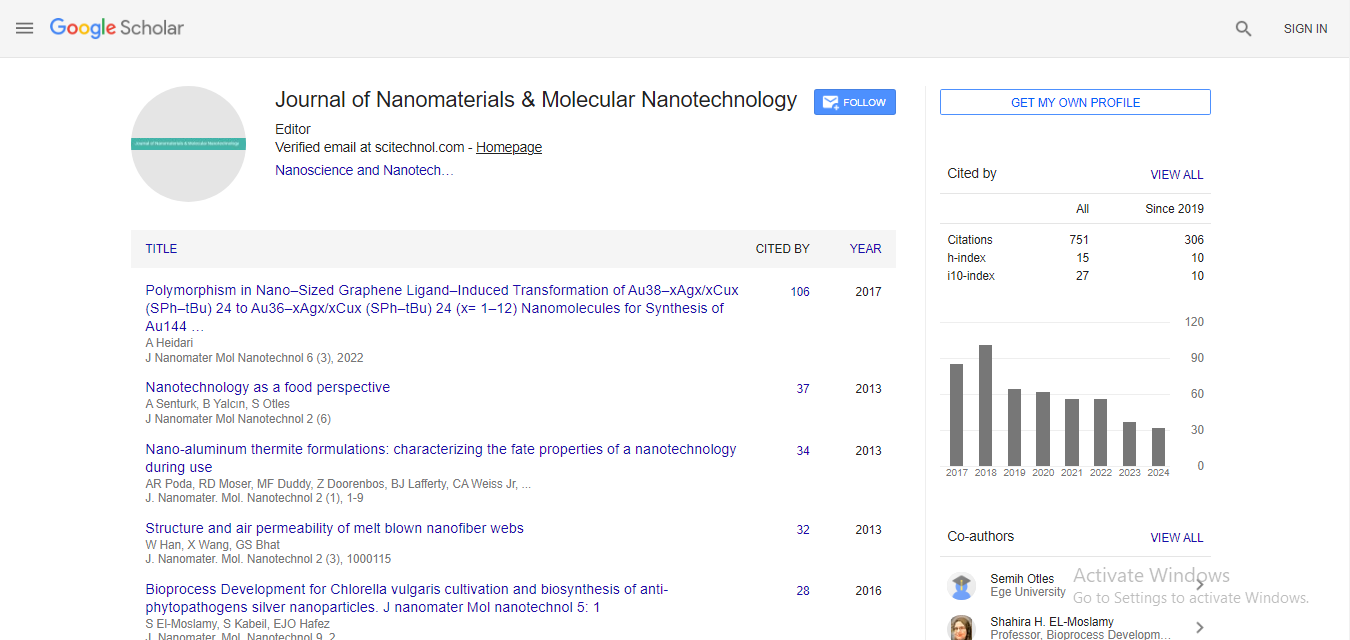Antibacterial drug Ciprofloxacin encapsulation in reduced Graphite Oxide (rGO)-Zinc oxidepoly( Ethylene Glycol) nanocomposite for effective activity
Wijekoon Shdp, Dunuweera Sp and Rajapakse Rmg
University of Peradeniya, Sri Lanka
: J Nanomater Mol Nanotechnol
Abstract
Ciprofloxacin (CF) [1-cyclopropyl-6-fluoro-4-oxo-7- (piperazin-1-yl)-quinoline-3-carboxylic acid] is a fluoroquinolone-type antibiotic used to treat a number of bacterial infections which include bone and joint infections, intra-abdominal infections, certain types of infectious diarrhea, respiratory tract infections, skin infections, typhoid fever, and urinary tract infections, among others either on its own or in combination with other antibiotics such as Metronidazole. CF can be administered orally or intravenously. Common side effects of CF are nausea, vomiting, diarrhea and rash. CF increases the risk of tendon rupture and worsening muscle weakness in people with the neurological disorder such as myasthenia gravis. Most of these side effects and the dosage of the can be reduced and the efficacy can be enhanced when the drug is encapsulated in a suitable carrier and is allowed to release slowly and steadily only in required minimum dosage over a long period. In this research, CF was encapsulated in reduced graphite oxide (rGO)-Zinc Oxide-Poly(Ethylene Glycol) nanocomposite in order to prepare a CF slow and steady release formulation. Successfully synthesized the nanocomposite, encapsulation of the antibacterial drug CP was carried out in the research work. The product obtained was characterized using XRD, SEM, EDAX and FT-IR and the supernatant was characterized by UV-visible absorption spectroscopy SEM images, XRD, XRF and FTIR data show that the synthesis of the nanocomposite and encapsulation of the drug in the nanocomposite. In-vitro bacterial cell studies show that the effective bacterial inhibition has been occurred due to synthesized nanocomposite.
Biography
E-mail: Dilanpriyankara999@gmail.com
 Spanish
Spanish  Chinese
Chinese  Russian
Russian  German
German  French
French  Japanese
Japanese  Portuguese
Portuguese  Hindi
Hindi 



